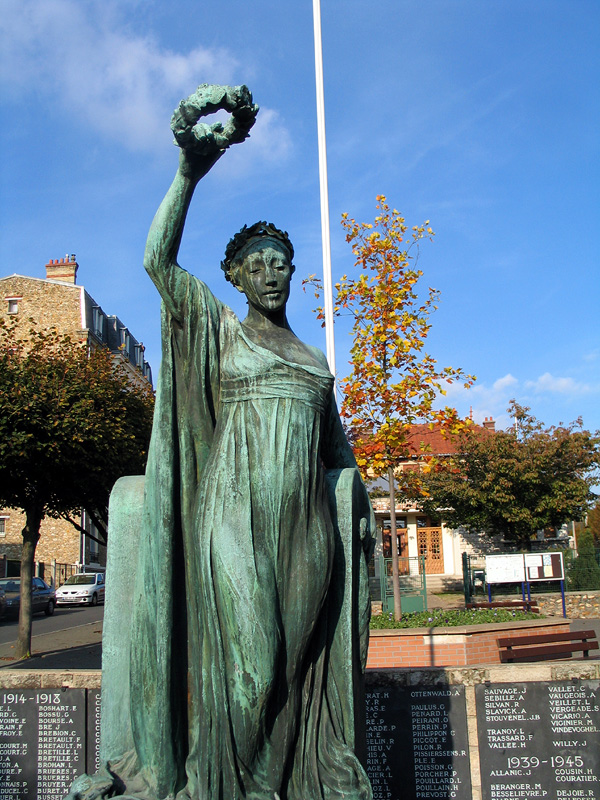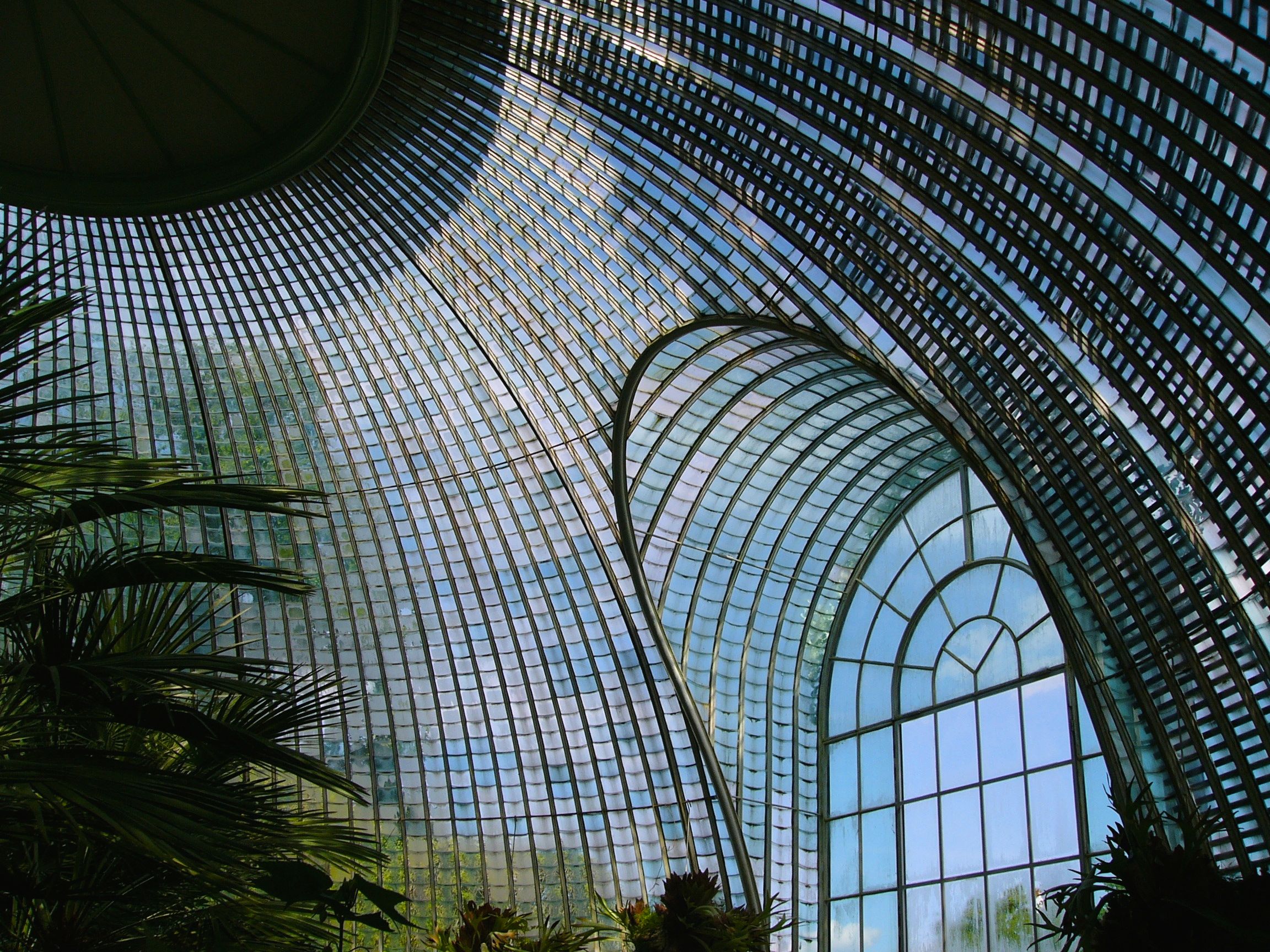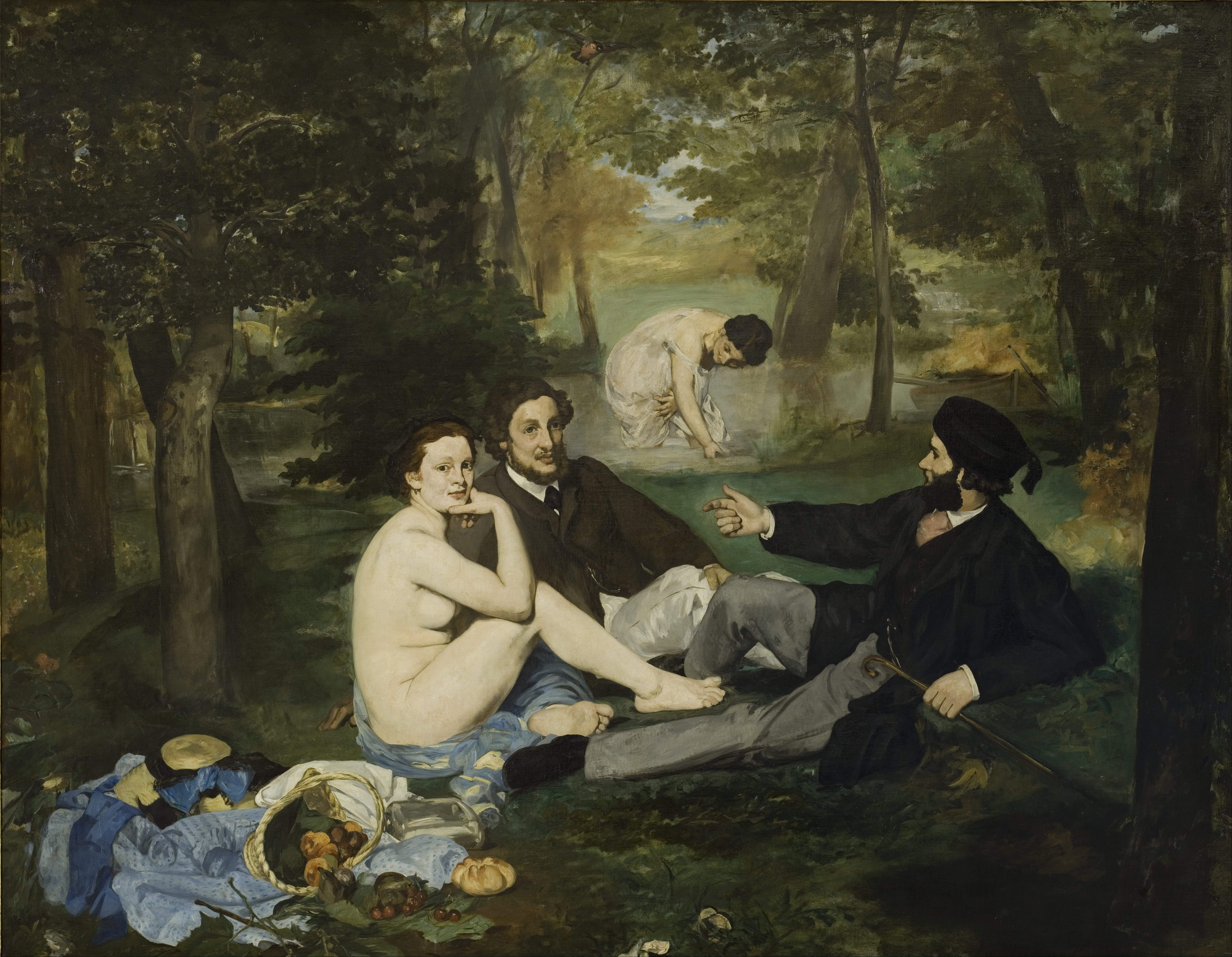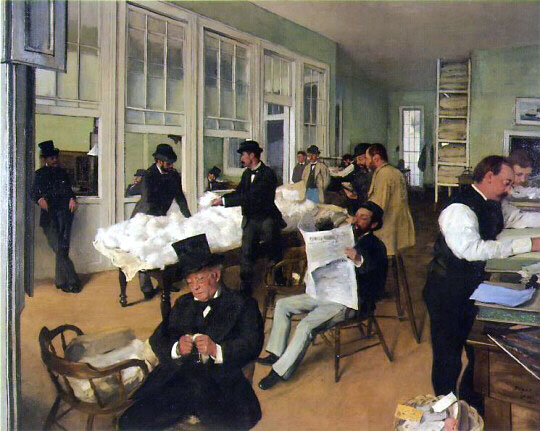|
In The Conservatory (Bartholomé)
''In the Conservatory'' () also known as In the Greenhouse, is an 1881 painting by French artist Albert Bartholomé (1848-1928). It is a full-length portrait of Bartholomé's wife, Prospérie de Fleury, wearing a purple and white dress while standing in the open door of a conservatory. It was exhibited at the Salon of the Société des Artistes Français in 1881. The painting shares elements of Classicism in the style of ceremonial portraits, Realism in the style of Jules Bastien-Lepage (1848-1884), and Impressionism in the style of Gustave Caillebotte (1848-1894).Dans la serre Albert Bartholomé (1848-1928). Musées d'Orsay. Retrieved April 14, 2023. Prospérie died in 1887, devastating the artist. |
Albert Bartholomé
Paul-Albert Bartholomé was a French painter and sculptor. He was born on 29 August 1848 in Thiverval-Grignon, Yvelines, France, and died in 1928 in Paris. He won the Grand Prize for sculpture at the Exposition Universelle (1900), Exposition Universelle in 1900. He exhibited paintings at the Salon (Paris), Salon from 1879 to 1886, but thereafter devoted his work to sculpture. Biography He studied law and fought in the Franco-Prussian War in General Bourbaki's army and became a prisoner in Switzerland. In due course he attended the École nationale supérieure des Beaux-Arts, École des Beaux-Arts in Paris where he studied painting under Barthélemy Menn and Jean-Léon Gérôme. He then set himself up in a studio in Paris and became a close friend of Edgar Degas. He married the daughter of a marquis, Prospérie de Fleury, but she died at a young age in 1887. Much encouraged by Degas he decided to try his hand at sculpture and executed the moving sculpture which marked his wif ... [...More Info...] [...Related Items...] OR: [Wikipedia] [Google] [Baidu] |
Conservatory (greenhouse)
A conservatory is a building or room having glass or other transparent roofing and walls, used as a greenhouse or a sunroom. Usually it refers to a space attached to a conventional building such as a house, especially in the United Kingdom. Elsewhere, especially in America, it can often refer to a large freestanding glass-walled building in a botanic garden or park, sometimes also called a palm house if tall enough for trees. Municipal conservatories became popular in the early 19th century. Description Many cities, especially those in cold climates and with large European populations, have built municipal conservatories to display tropical plants and hold flower displays. This type of conservatory was popular in the early nineteenth century, and by the end of the century people were also giving them a social use (e.g., tea parties). Conservatory architecture varies from typical Victorian glasshouses to modern styles, such as geodesic domes. Many were large and impressive ... [...More Info...] [...Related Items...] OR: [Wikipedia] [Google] [Baidu] |
Société Des Artistes Français
The Société des Artistes Français (, meaning "Society of French Artists") is the association of French painters and sculptors established in 1881. Its annual exhibition is called the "Salon des artistes français" (not to be confused with the better-known Salon, established in 1667). When the Société was established, it associated all the French artists. Its president was a painter and its vice-president a sculptor. The main task of the Société is to organize the ''Salon'', since the French government ceased to do it. Secession In December 1890 president Bouguereau suggested that the ''Salon'' should be an exhibition of young, yet unrecognized, artists. Ernest Meissonier, Puvis de Chavannes, Auguste Rodin and others rejected this proposal and left the organization. They quickly created their own exhibition (Société Nationale des Beaux-Arts in 1899) that was also named the ''Salon'', officially ''Salon de la Société Nationale des Beaux–Arts'', in short ''Salon du ... [...More Info...] [...Related Items...] OR: [Wikipedia] [Google] [Baidu] |
Classicism
Classicism, in the arts, refers generally to a high regard for a classical period, classical antiquity in the Western tradition, as setting standards for taste which the classicists seek to emulate. In its purest form, classicism is an aesthetic attitude dependent on principles based in the culture, art and literature of ancient Greece and Ancient Rome, Rome, with the emphasis on form, simplicity, proportion, clarity of structure, perfection and restrained emotion, as well as explicit appeal to the intellect. The art of classicism typically seeks to be formal and restrained: of the ''Discobolus'' Sir Kenneth Clark observed, "if we object to his restraint and compression we are simply objecting to the classicism of classic art. A violent emphasis or a sudden acceleration of rhythmic movement would have destroyed those qualities of balance and completeness through which it retained until the present century its position of authority in the restricted repertoire of visual images. ... [...More Info...] [...Related Items...] OR: [Wikipedia] [Google] [Baidu] |
Realism (art Movement)
Realism was an artistic movement that emerged in France in the 1840s. Realists rejected Romanticism, which had dominated French literature and art since the early 19th century. The artist Gustave Courbet, the original proponent of Realism, sought to portray real and typical contemporary people and situations with truth and accuracy, not avoiding unpleasant or sordid aspects of life. Realism revolted against the exotic subject matter, exaggerated emotionalism, and the drama of the Romantic movement, often focusing on unidealized subjects and events that were previously rejected in artwork. Realist works depicted people of all social classes in situations that arise in ordinary life, and often reflected the changes brought by the Industrial and Commercial Revolutions. Realism was primarily concerned with how things appeared to the eye, rather than containing ideal representations of the world. Realism spread to other countries, maintaining similar principles with some differences ... [...More Info...] [...Related Items...] OR: [Wikipedia] [Google] [Baidu] |
Jules Bastien-Lepage
Jules Bastien-Lepage (1 November 1848 – 10 December 1884) was a French painter closely associated with the beginning of naturalism, an artistic style that grew out of the Realist movement and paved the way for the development of impressionism. Émile Zola described Bastien-Lepage's work as "impressionism corrected, sweetened and adapted to the taste of the crowd." His ''en plein air'' depictions of peasant life in the countryside were highly influential on many international artists, including George Clausen in England and Tom Roberts in Australia. He also won renown for his history paintings, among the most famous being ''Joan of Arc'', now held at the Metropolitan Museum of Art in New York. Life and work Bastien-Lepage was born in the village of Damvillers, Meuse, and spent his childhood there. Bastien's father grew grapes in a vineyard to support the family. His grandfather also lived in the village; his garden had espaliered fruit trees of apple, pear, a ... [...More Info...] [...Related Items...] OR: [Wikipedia] [Google] [Baidu] |
Impressionism
Impressionism was a 19th-century art movement characterized by visible brush strokes, open Composition (visual arts), composition, emphasis on accurate depiction of light in its changing qualities (often accentuating the effects of the passage of time), ordinary subject matter, unusual visual angles, and inclusion of movement as a crucial element of human perception and experience. Impressionism originated with a group of Paris-based artists whose independent exhibitions brought them to prominence during the 1870s and 1880s. The Impressionists faced harsh opposition from the conventional art community in France. The name of the style derives from the title of a Claude Monet work, ''Impression, soleil levant'' (''Impression, Sunrise''), which provoked the critic Louis Leroy to coin the term in a Satire, satirical 1874 review of the First Impressionist Exhibition published in the Parisian newspaper ''Le Charivari''. The development of Impressionism in the visual arts was soon foll ... [...More Info...] [...Related Items...] OR: [Wikipedia] [Google] [Baidu] |
Gustave Caillebotte
Gustave Caillebotte (; 19 August 1848 – 21 February 1894) was a French painter who was a member and patron of the Impressionists, although he painted in a more Realism (arts), realistic manner than many others in the group. Caillebotte was known for his early interest in photography as an art form. Early life Gustave Caillebotte was born on 19 August 1848 to an upper-class Parisian family living in the rue du Faubourg-Saint-Denis. His father, Martial Caillebotte (1799–1874), was the inheritor of the family's military textile business and was also a judge at the Tribunal de commerce de Paris, Tribunal de commerce de la Seine. Caillebotte's father was twice widowed before marrying Caillebotte's mother, Céleste Daufresne (1819–1878), who had two more sons after Gustave: René (1851–1876) and Martial Caillebotte, Martial (1853–1910). Caillebotte earned a law degree in 1868 and a license to practice law in 1870, and he also was an engineer. Shortly after his education, h ... [...More Info...] [...Related Items...] OR: [Wikipedia] [Google] [Baidu] |
Edgar Degas
Edgar Degas (, ; born Hilaire-Germain-Edgar De Gas, ; 19 July 183427 September 1917) was a French Impressionist artist famous for his pastel drawings and oil paintings. Degas also produced bronze sculptures, prints, and drawings. Degas is especially identified with the subject of dance; more than half of his works depict dancers. Although Degas is regarded as one of the founders of Impressionism, he rejected the term, preferring to be called a realist,Gordon and Forge 1988, p. 31 and did not paint outdoors as many Impressionists did. Degas was a superb draftsman, and particularly masterly in depicting movement, as can be seen in his rendition of dancers and bathing female nudes. In addition to ballet dancers and bathing women, Degas painted racehorses and racing jockeys, as well as portraits. His portraits are notable for their psychological complexity and their portrayal of human isolation. At the beginning of his career, Degas wanted to be a history painter, a callin ... [...More Info...] [...Related Items...] OR: [Wikipedia] [Google] [Baidu] |
Musée D'Orsay
The Musée d'Orsay ( , , ) () is a museum in Paris, France, on the Rive Gauche, Left Bank of the Seine. It is housed in the former Gare d'Orsay, a Beaux-Arts architecture, Beaux-Arts railway station built from 1898 to 1900. The museum holds mainly French art dating from 1848 to 1914, including paintings, sculptures, furniture, and photography. It houses the largest collection of Impressionist and post-Impressionist masterpieces in the world, by painters including Berthe Morisot, Monet, Claude Monet, Manet, Édouard Manet, Degas, Renoir, Cézanne, Seurat, Alfred Sisley, Sisley, Gauguin, and Vincent van Gogh, van Gogh. Many of these works were held at the Galerie nationale du Jeu de Paume prior to the museum's opening in 1986. It is one of the list of largest art museums, largest art museums in Europe. In 2022 the museum had 3.2 million visitors, up from 1.4 million in 2021. It was the sixth-most-visited art museum in the world in 2022, and second-most-visited art museum in France ... [...More Info...] [...Related Items...] OR: [Wikipedia] [Google] [Baidu] |
19th-century Portraits
The 19th century began on 1 January 1801 (represented by the Roman numerals MDCCCI), and ended on 31 December 1900 (MCM). It was the 9th century of the 2nd millennium. It was characterized by vast social upheaval. Slavery was abolished in much of Europe and the Americas. The First Industrial Revolution, though it began in the late 18th century, expanded beyond its British homeland for the first time during the 19th century, particularly remaking the economies and societies of the Low Countries, France, the Rhineland, Northern Italy, and the Northeastern United States. A few decades later, the Second Industrial Revolution led to ever more massive urbanization and much higher levels of productivity, profit, and prosperity, a pattern that continued into the 20th century. The Catholic Church, in response to the growing influence and power of modernism, secularism and materialism, formed the First Vatican Council in the late 19th century to deal with such problems and confirm ce ... [...More Info...] [...Related Items...] OR: [Wikipedia] [Google] [Baidu] |
Paintings In The Musée D'Orsay
Painting is a visual art, which is characterized by the practice of applying paint, pigment, color or other medium to a solid surface (called "matrix" or " support"). The medium is commonly applied to the base with a brush. Other implements, such as palette knives, sponges, airbrushes, the artist's fingers, or even a dripping technique that uses gravity may be used. One who produces paintings is called a painter. In art, the term "painting" describes both the act and the result of the action (the final work is called "a painting"). The support for paintings includes such surfaces as walls, paper, canvas, wood, glass, lacquer, pottery, leaf, copper and concrete, and the painting may incorporate other materials, in single or multiple form, including sand, clay, paper, cardboard, newspaper, plaster, gold leaf, and even entire objects. Painting is an important form of visual art, bringing in elements such as drawing, composition, gesture, narration, and abstraction. Painting ... [...More Info...] [...Related Items...] OR: [Wikipedia] [Google] [Baidu] |









